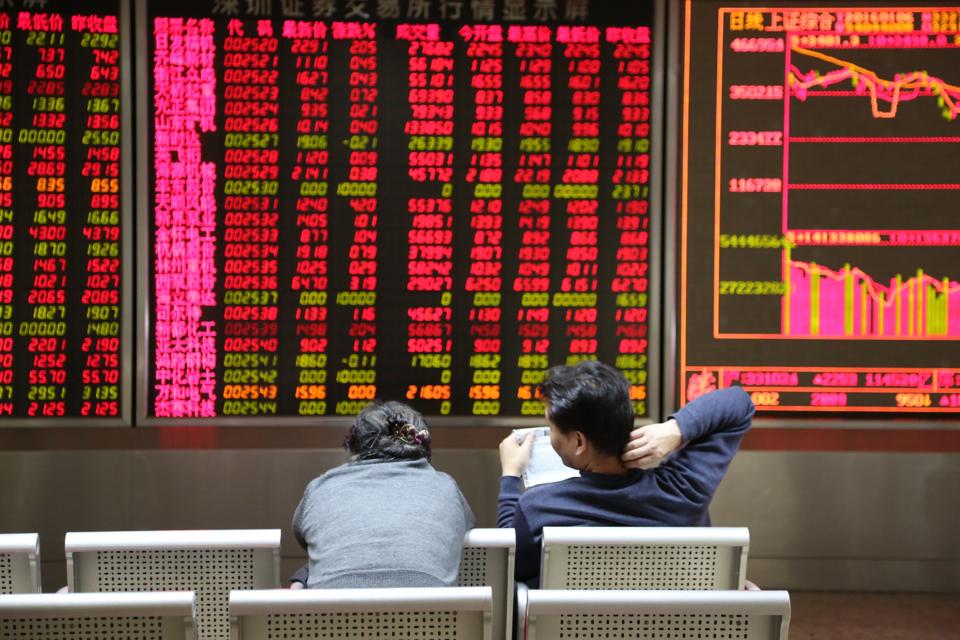Chinese equity markets are surging, causing anxiety for investors who have abandoned the market after years of poor returns. FXI, a popular ETF that tracks 50 of the most prominent companies in China, has jumped 29% from its recent low set in mid-January, outpacing gains in most other emerging and developed markets. The ETF has soared 16% in the last two weeks alone, rising 9 out of the last 10 trading sessions. What is behind the change in sentiment and is it sustainable?
Several factors are at play:
Economic data is improving
China’s housing crisis is well known. The property sector accounts for roughly one-quarter of China’s economic activity and has yet to respond to the government’s rescue efforts. Official data showed that property investment fell 9.5% in the first three months of the year as developers struggled to secure financing. Still, newly released data indicates the economy is holding up better than expected.
China’s economy grew 5.3% in the first quarter, exceeding estimates, and increasing confidence that the government will meet its ambitious annual GDP growth target of about 5%. Manufacturing activity is still expanding, as both the official NBS and Caixin Manufacturing PMI surprised to the upside in April. It was the sixth straight month of growth in factory activity and the fastest pace since February 2023. Growth in services is also helping the GDP figures, with the Caixin Services PMI remaining in expansionary territory for the 16th straight month.
Domestic demand is still a concern, but is showing signs of a bottom. Household consumption growth and income, while down from levels a year, have improved over the last three months. Employment is steady and also improved slightly in the first quarter. Overall, the economic data has surprised to the upside and is one reason for the bottoming of sentiment and the equity market.
Valuations are cheap and market technicals are improving
Despite the bounce in share prices, Chinese stocks are still trading at significant discounts to their global peers. The Shanghai Composite Index’s one-year forward price/earnings ratio is 11.4, 46% below the 21.1 multiple of the S&P 500. Other financial ratios like price-to-sales also highlight the cheapness of Chinese equities compared to the U.S., both on an absolute and a relative basis.
Shareholder-friendly activities from Chinese tech leaders like Alibaba, Tencent, and JD, which each announced billions in buybacks over the past few months, are also helping to support stock prices.
Market breadth is improving. 65% of the stocks in the Shanghai Composite Index are trading above their 50-day moving average, compared to around 20% at year-end. From a technical perspective, the index is trading back above its 200-day moving average, which could force trend followers to capitulate further into the market.
Government policy is supportive
The April meeting of the Chinese Politburo, which gets together three times per year to discuss the economy, indicated additional policy shifts to support the housing market and the economy. In a statement released following the meeting, Chinese officials pledged to “maintain the necessary intensity of fiscal expenditure” to support growth and to “flexibly use policy tools such as interest rates and reserve requirement ratios to increase support for the real economy.”
Bond yields fell after the meeting, a sign that markets expect the government to maintain a low interest rate policy. This should help the property sector and potentially attract inflows to the equity market. Ten-year government bond yields are 0.43% lower year-to-date.
Also helping share prices are new reforms to aid transparency and stock market liquidity. These reforms include initiatives that will boost dividends, add scrutiny to new listings and provide additional investor protections. These reforms are seen as a positive step by the government to support the equity markets, a reversal of policies over the last few years that appeared to disregard the impact on stock prices.
Geopolitical and economic risks still exist
Despite the turnaround in market prices, there are few signs that geopolitical tensions between China and the U.S. are improving. Senior U.S. officials made trips to China in the last few weeks, but the outcomes of those meetings did not result in meaningful policy changes. Both sides seemed content to focus on keeping the status quo and avoiding further deterioration.
Until real improvements are made, many allocators may still deem China “uninvestable.” Even a near 30% rally from the lows does not repair the damage Chinese exposure has caused to investment portfolios over the last four years. There may not be an urgency to reengage when other EM alternatives like India and Mexico have provided excellent returns.
Risk remain: the threat of foreign trade barriers, a deeper downturn in the property market, and the possibility that consumers and businesses won’t respond to the attempts to stimulate demand all weigh on investor sentiment toward China. However, one thing is for sure: FOMO is a powerful force, and regardless of the outlook, investors follow momentum. The rally in Chinese equities may have more room to run.

